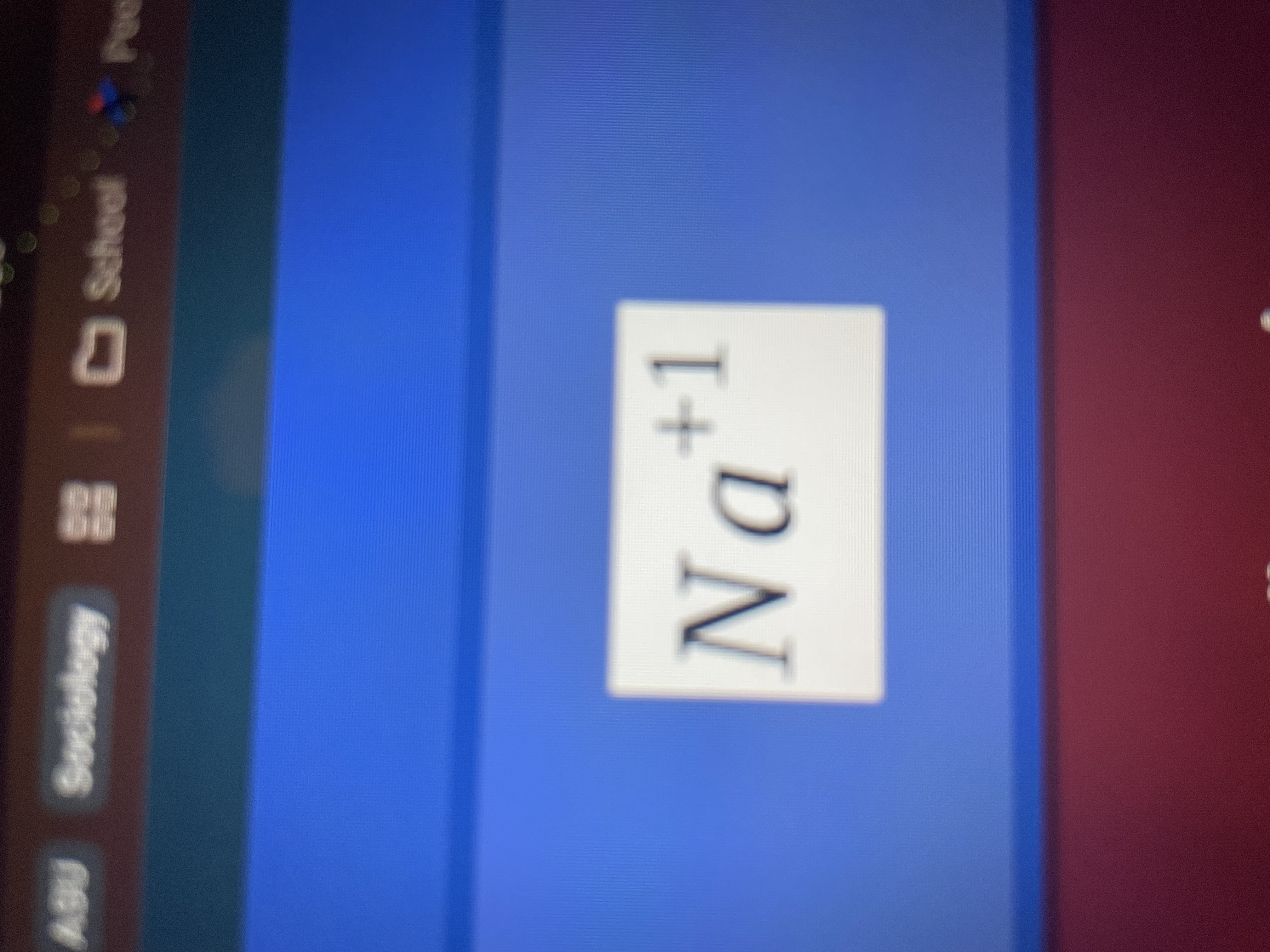chem honors periodic table trends
1/37
There's no tags or description
Looks like no tags are added yet.
Name | Mastery | Learn | Test | Matching | Spaced |
|---|
No study sessions yet.
38 Terms
When a sodium atom becomes an ion, the size of the atom______
Decreases by losing an electron
How many P orbitals are in the P sub level?
3
What element is indicated by the electron configuration [Xe] 6s*2 4f*14 5d*4
Tungsten (W)
Put the following in order of increasing ionization energy.
What is the electron configuration of Xe?
[Kr] 5s*2 4d*10 5p*6
How many electrons can fit in the first energy level?
2
Ions have the same number of____, but a different number of_____.
Ions have the same number of protons, but a different number of electrons.
Which section of the spectrum is the only one we can see?
Visible light
How many F orbitals are in the F sub level?
7
What is the electron configuration of tin?
[Kr] 5s*2 4d*10 5p*2
What happens to atomic radius as you go from left to right across the periodic table?
Decreases
What are columns called in the periodic table?
Groups

What is the particle designated here?
Compare K and Br
K is bigger and has a lower ionization energy than Br
Electrons are located in cloud like areas called what?
Orbitals
What is the complete electron configuration for rhodium?
1s*2 2s*2 2p*6 3s*2 3p*6 4s*2 3d*10 4p*6 5s*1 4d*8
Classify the following using these factors. Good conductors of heat and electricity. Malleable can be beaten into thin sheets. Ductile can be stretched into wire. Possesses metallic cluster solid at room temperature.
Metal
The energy of waves does what as a wavelength gets shorter?
The wavelength increases
How many valence electrons does this element have? Kr 5s2 4d10 5p1
It has 3 valence electrons
How many electrons can fit in the P sub level?
6
Ar 4s1
Potassium
What was responsible for the colored flame?
Electrons losing energy
What are metalloids on the periodic table?
Along the boron staircase
Which color has the highest frequency?
Blue
Compare contrast and explain the relationship between the terms, metal nonmetal and metalloid.
Metals are conductive, shiny, and lose electrons; nonmetals are non-conductive, dull, and gain electrons; metalloids have intermediate properties and act as semiconductors, bridging metals and nonmetals on the periodic table.These categories help classify elements and predict their behavior, especially in chemical reactions.
Compare and contrast and explain the relationship between the term, valence electrons, core electrons and electron configuration
Electron configuration determines the number of valence and core electrons, which in turn dictates the chemical properties of an element.
Compare and contrast and explain the relationship between the term periodic table, group, and electron configuration.
The periodic table's structure reflects the repeating patterns of electron configurations, which determine the chemical properties of the elements. A group is each column of the periodic table.
Compare contrast and explain the relationship between the terms, energy level, sub level and orbital
Energy levels contain sublevels, and sublevels contain orbitals; this structure defines the probability of finding an electron in a specific region of space within an atom.
Why are the valence electrons more important to the atoms chemical properties than the core electrons? How is the number of valence electrons in an atom related to the atoms position on the periodic table?
The valence electrons are the electrons involved in chemical bonding and ion formation. The core electrons are shielded by the valence shell and do not normally determine the chemical properties of an element. The group number corresponds to the number of valence electrons for an element.
What is a periodic trend and how does it relate to the structure of the atoms?
Patterns of chemical properties that repeat. The structure of the atom determines the properties of the element in predictable ways. The number of valence electrons and the number of energy levels are commonly used to discuss trends.
What does Hund’s rule state?
Hund’s rule states that equal energy orbitals like the 2p orbitals will fill with one electron each before pairing.
What does Aufbau’s rule state?
Aufbau’s Principal states that electrons will fill the lowest energy orbitals first before filling, higher energy orbitals (1s fills before 2s).
What does Pauli’s rule state?
Pauli’s exclusion principle states that two electrons in the same orbital must spin in different directions
If I have the property atomic radius, what will happen with the period and what will happen with the group?
The period will decrease. The group will increase.
If I have the property Electronegativity, what will happen with the period and what will happen with the group?
The period will increase. The group will decrease.
If I have the property ionic radius, what will happen with the period and what will happen with the group?
The period will decrease. The group will increase.
If I have the property ionization energy, what will happen with the period and what will happen with the group?
The period will increase. The group will decrease.
If I have the property Metallic Character, what will happen with the period and what will happen with the group?
The period will decrease. The group will increase.